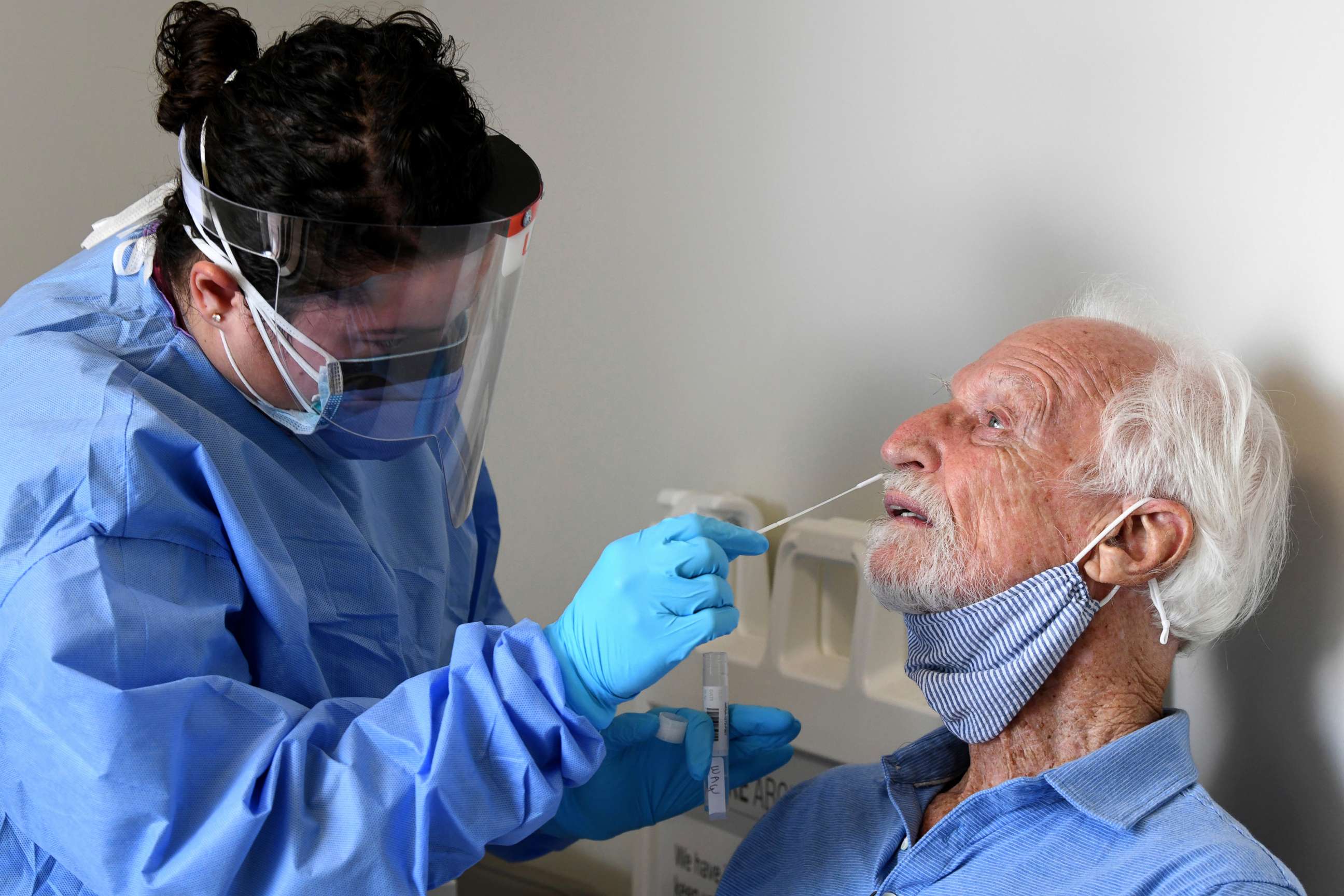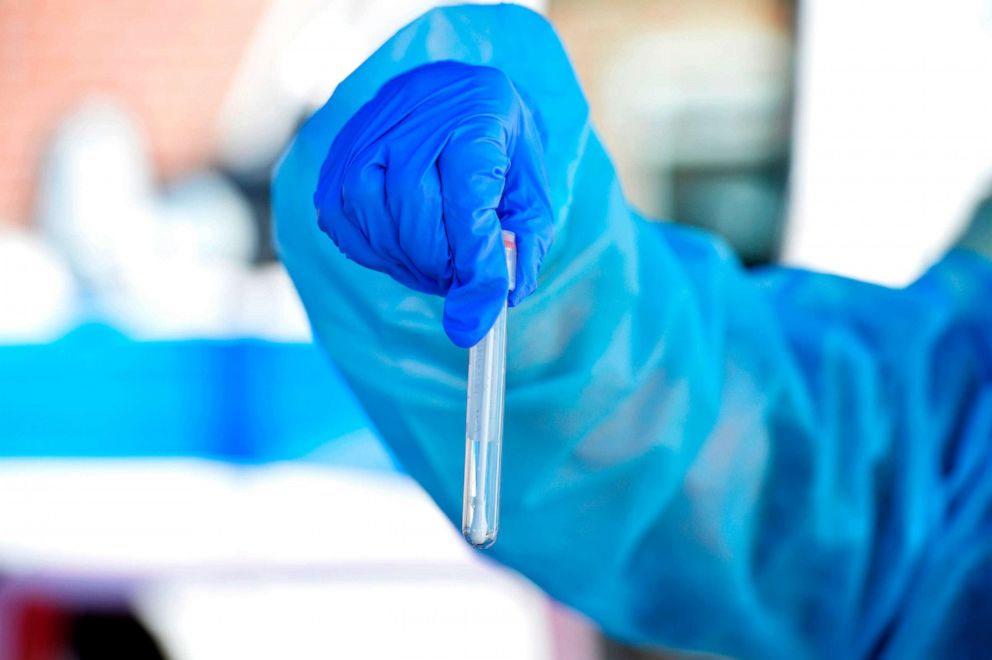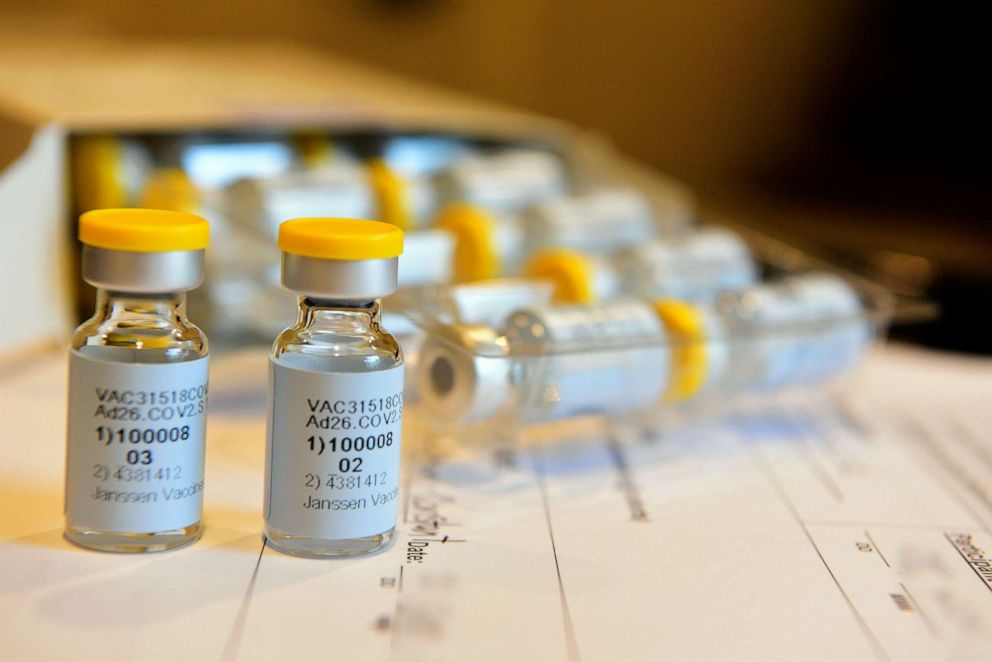Let's not lose our 3rd chance to contain COVID-19: OPINION
Drs. Bechara Choucair and Jay Bhatt lay out five steps to contain the virus.
The fight against COVID-19 is far from over, but we are starting to see signs of significant progress. Across the country, we are seeing 11 new cases per 100,000 people per day, down from our peak of 20 per 100,000 in August. While this is a sign of improvement, we need to remember that we've been in this position -- twice before.
When we first learned of cases in the U.S., as a country we did not test enough and we did not effectively contact trace. We missed our first chance to contain the outbreak, so the pandemic took hold and forced us to rely on widespread shutdowns to slow its spread.
Next, we pushed to rapidly reopen parts of our public life before the virus had been contained and managed. New cases surged as a result. We missed our second chance to suppress the pandemic.
Now that we have reached this tipping point and new COVID-19 cases are moving in the right direction, we have a very brief moment in time -- right now -- to take advantage of our progress. If we do, we will emerge with incredible momentum in our fight, even as we prepare for flu season and cope with the natural disasters that have beset so many parts of our country.
Let’s not miss our third chance to contain the virus. Here are five things we need to do right now to take advantage of our progress and propel our nation out of the pandemic.
1. Broaden our testing guidelines.
For the first time since the pandemic took hold in the U.S., we have the broad testing capability and capacity we need to meaningfully prevent the virus' spread in communities. More types of tests are on the market, including lower-cost antigen tests that can confirm cases in as little as 15 minutes. And now that those turnaround times for tests have improved, effective action can be taken based on the results.

In combination with diagnostic testing, we must provide clear screening guidelines for health care workers, teachers, students, agriculture workers and others so that we are detecting outbreaks quickly and managing them effectively
2. Step up contact tracing.
Contact tracing identifies new cases of COVID-19 and alerts potentially exposed individuals, who can then take extra precautions to avoid infecting others. Effective tracing like this reduces the number of people contracting COVID-19, lessens the burden on our health system and health workforce, and enables greater freedom of movement and socialization for more people. This critical work, which should have been put into motion at the very first outbreak, is steadily improving. Now is the time for a massive push.
We need thousands of people to assist in the effort, even while states are under intense budget pressure due to declining revenue. But the truth is that we cannot successfully contain the virus without these investments in our public health workforce. And if we are smart with how we invest -- by recruiting and hiring directly from communities hardest hit by COVID-19 -- we can support a more equitable economic recovery.
3. Double down on what's working.
In the weeks and months to come, there will be concerted efforts to help us all safely return to work, school, houses of worship, and life as we knew it before the pandemic. We must double down on the actions we know work. Washing our hands, wearing masks, and maintaining physical distance are efforts we must continue to make.

We all need to prepare for and accept the fact that large, indoor gatherings will not be safe for the foreseeable future. There will continue to be disruptions to our daily lives. But we can relieve some of our collective anxiety if we agree to follow the science, and if we extend patience and grace to our neighbors and communities as we all work through these challenges together.
4. Avoid the flu "twindemic."
To prevent widespread outbreaks of both the flu and COVID-19 across the country this year, we must develop a dependable infrastructure to distribute and administer the flu shot safely amid social distancing and modified protocols. We also need to ensure that people -- particularly our communities’ most vulnerable who may normally skip a flu shot -- receive a vaccination. Fewer than half of adults over 18 got their flu shot during the last flu season, a number that needs to dramatically increase this year.
So if you are able to receive a flu shot, please do so. Researchers around the globe are still working on a COVID-19 vaccine. Thankfully, we already have one for the flu -- and getting it could save your life.
5. Prepare for COVID-19 vaccine distribution.
There will be an effective vaccine developed, and once we have it we cannot afford to be slow to make it widely available. It is imperative that resources be dedicated in advance to provide vaccines, track who has received them, and keep our care providers safe and healthy throughout the process.

It has been a long seven months for our country and the world, but progress is undoubtedly being made. Scientists are developing vaccines, communities are trying to come back to a new normal, and we are putting more systems in place to monitor and predict when new outbreaks might occur so that they can be curtailed.
Working in cooperation with first responders and local public health officials, we can successfully contain COVID-19 in the U.S. and emerge from this next phase in our response ready to meet the challenges of the next moment, together.
Dr. Bechara Choucair is a physician and chief health officer at Kaiser Permanente. His book, "Precision Community Health: Four Innovations for Well-being," was published in May. Dr. Jay Bhatt is a practicing internist, an Aspen Health Innovators Fellow, and an ABC News contributor.




